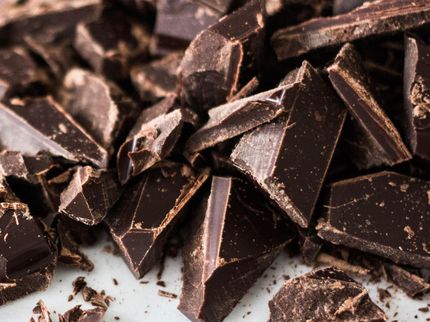Research ushers in new era of boutique chocolate
Advertisement
A team of Belgian researchers has shown that the yeasts used to ferment cocoa during chocolate production can modify the aroma of the resulting chocolate. "This makes it possible to create a whole range of boutique chocolates to match everyone's favorite flavor, similar to wines, tea, and coffee," says Jan Steensels, a postdoctoral researcher at the University of Leuven, and the Flanders Institute for Biotechnology, Belgium.
Initially, the researchers sought robust yeast strains that could outcompete the many invading yeast strains that flood the cocoa beans during fermentation. "After harvesting, the cocoa beans are collected in large plastic boxes, or even piled in large heaps on the soil, right in the farms where they are grown," explained Esther Meersman, a postdoctoral researcher with Steensels at the two institutions. The beans are surrounded by a gooey pulp, which is fermented by yeasts and bacteria. Any species in the environment can get into the mix, leaving little control over the ultimate flavor. But by outcompeting other microbes, robust yeast strains could prevent such infelicitous variability in taste, she said.
But the investigators noted striking differences in aroma among the chocolates made from fermentations using different robust yeasts, said Steensels. That was remarkable, he said, since only the yeast strains were different: the fermentations were performed identically, and the same recipe was used each time.
The team set out to breed novel yeast hybrids that would combine robustness with strong flavor production. "We were initially surprised that the volatile flavor compounds are retained in the beans during drying and roasting," said Meersman. The researchers hypothesize that the volatiles are protected from evaporation since they are dissolved in the fat fraction.
The investigators, who collaborated in this research with Barry Callebaut, the world's largest chocolate producer, have combined two critical characteristics of yeast in single hybrid variants: the ability to dominate cocoa fermentations, and to produce a specific flavor. "This means that for the first time, chocolate makers have a broad portfolio of different yeast strains that are all producing different flavors," says Steensels. "This is similar to the current situation in beer brewing and wine making." A new era of chocolate may be dawning.
Original publication
Esther Meersman, Jan Steensels, Nore Struyf, Tinneke Paulus, Veerle Saels, Melissa Mathawan, Leen Allegaert, Gino Vrancken and Kevin J. Verstrepen; "Tuning chocolate flavor through development of thermotolerant Saccharomyces cerevisiae starter cultures with increased acetate ester production"; Applied and Environmental Microbiology; 2015
















































